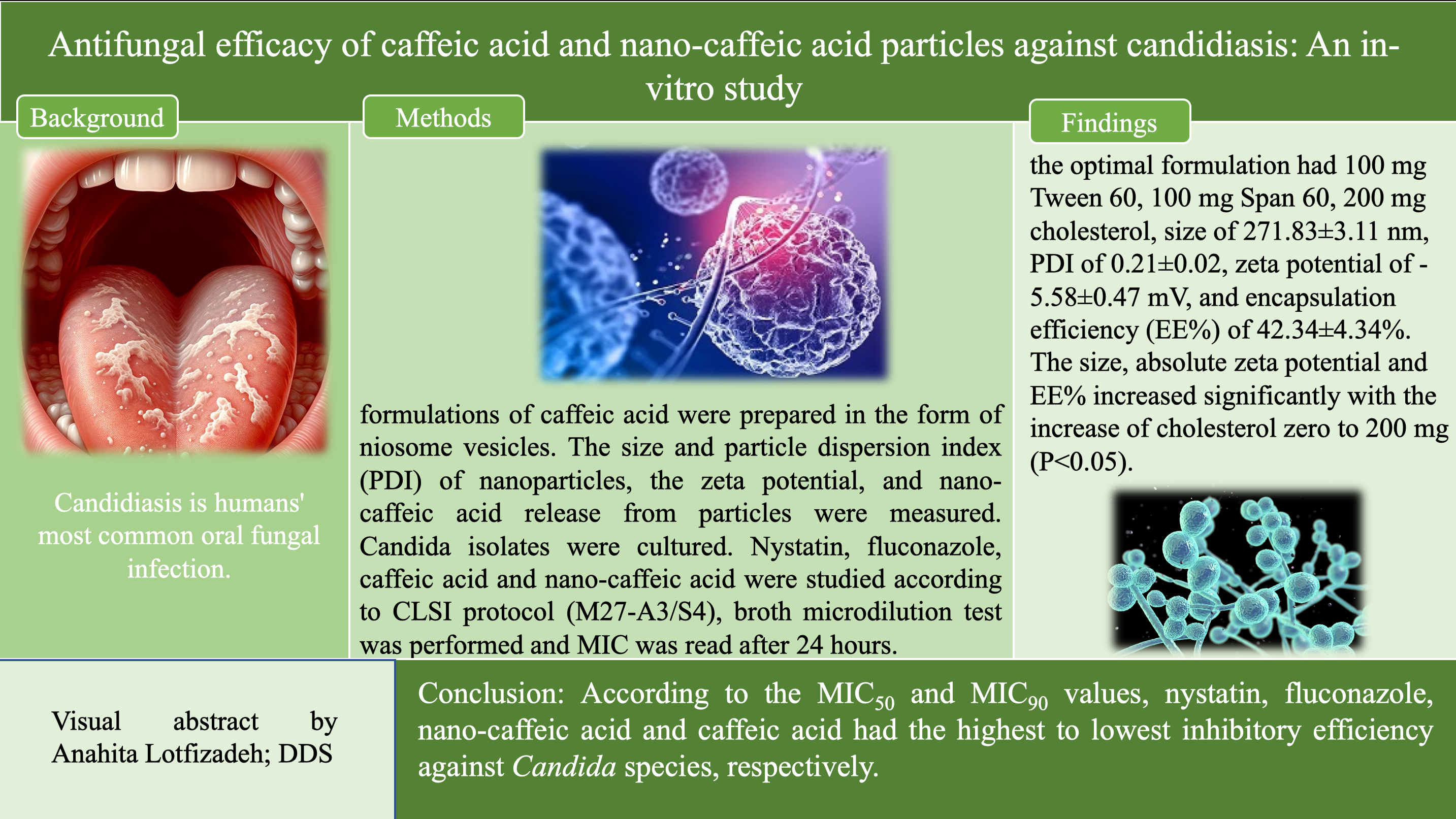Volume 35, Issue 247 (8-2025)
J Mazandaran Univ Med Sci 2025, 35(247): 124-130 |
Back to browse issues page
Download citation:
BibTeX | RIS | EndNote | Medlars | ProCite | Reference Manager | RefWorks
Send citation to:



BibTeX | RIS | EndNote | Medlars | ProCite | Reference Manager | RefWorks
Send citation to:
Ghorbani A, Jafari A, Hosseinnataj A, Shiva A, Ghaffari Hamedani S M M, Lotfizadeh A et al . Investigating the Incidence of Malignant and Premalignant Oral Lesions in Patients Referr ing to Health Centers of Sari: A Six-Year Study. J Mazandaran Univ Med Sci 2025; 35 (247) :124-130
URL: http://jmums.mazums.ac.ir/article-1-20961-en.html
URL: http://jmums.mazums.ac.ir/article-1-20961-en.html
Anahita Ghorbani 
 , Ali Jafari
, Ali Jafari 
 , Abolfazl Hosseinnataj
, Abolfazl Hosseinnataj 
 , Atena Shiva
, Atena Shiva 
 , Seyed Mohammad Mehdi Ghaffari Hamedani
, Seyed Mohammad Mehdi Ghaffari Hamedani 
 , Anahita Lotfizadeh
, Anahita Lotfizadeh 
 , Tahereh Molania
, Tahereh Molania 


 , Ali Jafari
, Ali Jafari 
 , Abolfazl Hosseinnataj
, Abolfazl Hosseinnataj 
 , Atena Shiva
, Atena Shiva 
 , Seyed Mohammad Mehdi Ghaffari Hamedani
, Seyed Mohammad Mehdi Ghaffari Hamedani 
 , Anahita Lotfizadeh
, Anahita Lotfizadeh 
 , Tahereh Molania
, Tahereh Molania 

Abstract: (75 Views)
Background and purpose: Malignancies remain among the most common causes of death worldwide. Given the importance of epidemiological research in the prevention, early detection, and treatment of malignancies, the present study aims to examine the epidemiological characteristics of premalignant and malignant oral lesions in Sari during the years 2017 to 2023.
Materials and methods: This descriptive-analytical cross-sectional study investigated 268 patients with premalignant lesions or oral malignancies who met the inclusion criteria. Sampling was performed using a census method, based on records from private offices of oral pathologists, oral medicine specialists, oral and maxillofacial surgeons, and the Mazandaran Comprehensive Cancer Center. Demographic information, as well as data related to risk factors, lesion type, location, and symptoms, were collected using a checklist and clinical examination. Independent t-tests and chi-square tests were used for data analysis. The data were analyzed using SPSS version 23. A P-value of <0.05 was considered statistically significant.
Results: Of the total 268 patients, 178 (66.4%) had malignant lesions, with oral squamous cell carcinoma being the most common malignant lesion. The mean age of patients was 60.71 ± 16.94 years, with the highest incidence observed in men; the tongue was the most common site of involvement. Among the 90 patients with premalignant lesions, only lichen planus and leukoplakia were identified. The mean age in this group was 50.91 ± 13.07 years, with the highest incidence recorded in women, and the buccal mucosa was the most common site. The findings showed that smoking was significantly more prevalent in the malignant group compared to the premalignant group (P < 0.001). Transformation to oral squamous cell carcinoma (OSCC) was observed in 30.8% of leukoplakia cases and 3.9% of lichen planus cases, respectively.
Conclusion: Given the risk of malignant transformation of premalignant oral lesions, including lichen planus and leukoplakia, and their high incidence, timely diagnosis, regular follow-up, and systematic treatment are crucial for the prevention and control of oral malignancies.
Materials and methods: This descriptive-analytical cross-sectional study investigated 268 patients with premalignant lesions or oral malignancies who met the inclusion criteria. Sampling was performed using a census method, based on records from private offices of oral pathologists, oral medicine specialists, oral and maxillofacial surgeons, and the Mazandaran Comprehensive Cancer Center. Demographic information, as well as data related to risk factors, lesion type, location, and symptoms, were collected using a checklist and clinical examination. Independent t-tests and chi-square tests were used for data analysis. The data were analyzed using SPSS version 23. A P-value of <0.05 was considered statistically significant.
Results: Of the total 268 patients, 178 (66.4%) had malignant lesions, with oral squamous cell carcinoma being the most common malignant lesion. The mean age of patients was 60.71 ± 16.94 years, with the highest incidence observed in men; the tongue was the most common site of involvement. Among the 90 patients with premalignant lesions, only lichen planus and leukoplakia were identified. The mean age in this group was 50.91 ± 13.07 years, with the highest incidence recorded in women, and the buccal mucosa was the most common site. The findings showed that smoking was significantly more prevalent in the malignant group compared to the premalignant group (P < 0.001). Transformation to oral squamous cell carcinoma (OSCC) was observed in 30.8% of leukoplakia cases and 3.9% of lichen planus cases, respectively.
Conclusion: Given the risk of malignant transformation of premalignant oral lesions, including lichen planus and leukoplakia, and their high incidence, timely diagnosis, regular follow-up, and systematic treatment are crucial for the prevention and control of oral malignancies.
Keywords: leukoplakia, lichen planus, oral cancer, oral premalignant lesions, oral squamous cell carcinoma
Type of Study: Brief Report |
Subject:
Dentistry
Send email to the article author
| Rights and permissions | |
 |
This work is licensed under a Creative Commons Attribution-NonCommercial 4.0 International License. |





